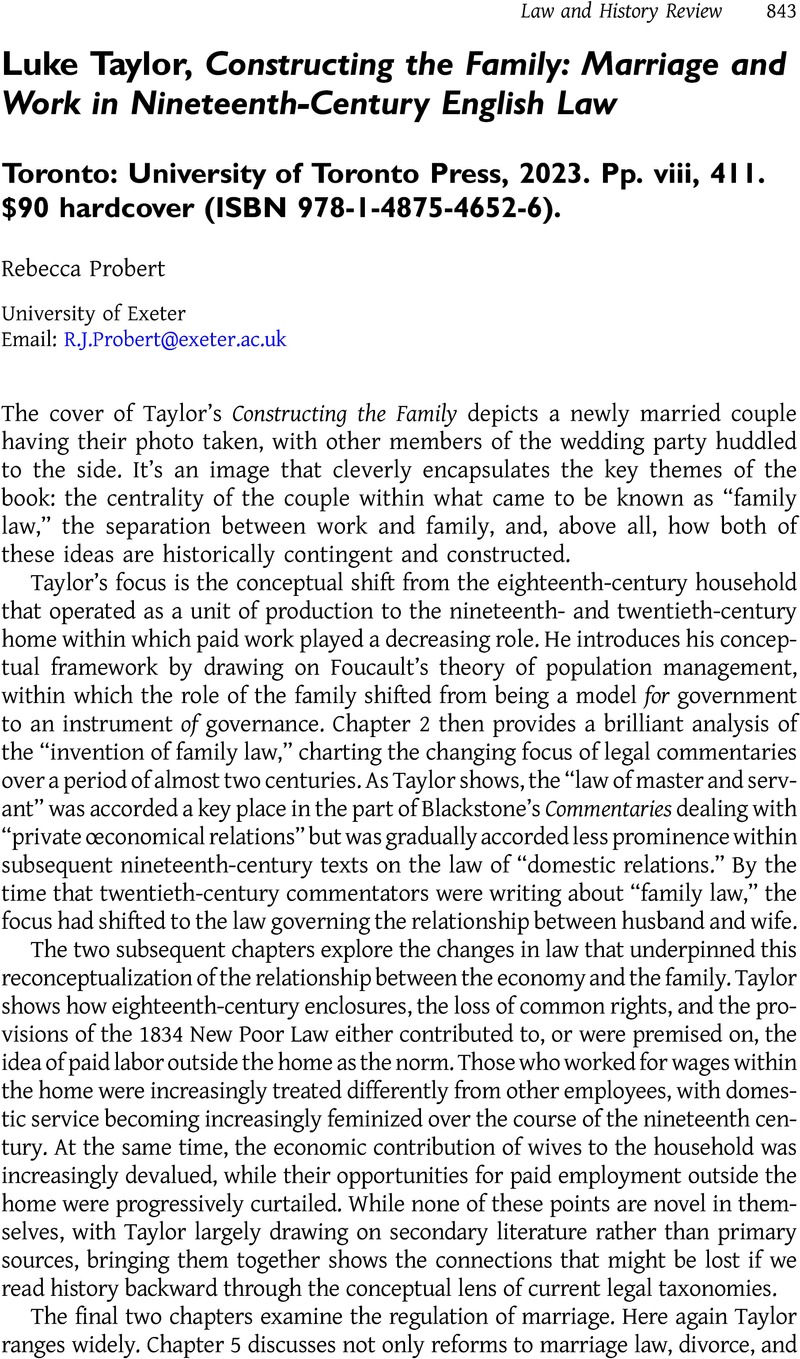No CrossRef data available.
Article contents
Luke Taylor, Constructing the Family: Marriage and Work in Nineteenth-Century English Law Toronto: University of Toronto Press, 2023. Pp. viii, 411. $90 hardcover (ISBN 978-1-4875-4652-6).
Review products
Luke Taylor, Constructing the Family: Marriage and Work in Nineteenth-Century English Law Toronto: University of Toronto Press, 2023. Pp. viii, 411. $90 hardcover (ISBN 978-1-4875-4652-6).
Published online by Cambridge University Press: 12 October 2023
Abstract
An abstract is not available for this content so a preview has been provided. Please use the Get access link above for information on how to access this content.

- Type
- Book Review
- Information
- Copyright
- Copyright © The Author(s), 2023. Published by Cambridge University Press on behalf of the American Society for Legal History


